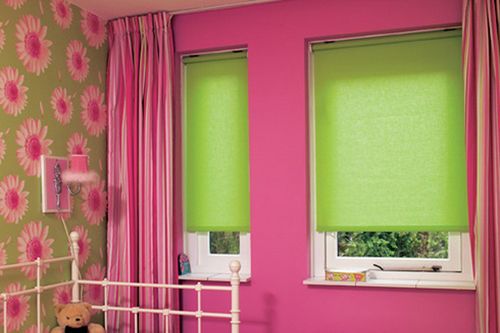How to sew curtains for a nursery: original ideas
Children's room is a place not only for children's, but also for mother's creativity. For a baby, and even for an older child, brightness and simplicity come first, a complex style is useless here. For the mother, the pretentious curtain composition creates additional difficulties: it is much more difficult to wash and iron it. But you can sew simple but bright curtains or remake existing ones with your own hands.
The result can be very interesting.
Color and texture
It is advisable to choose the fabric and style of the curtain for the nursery, taking into account the opinion of the child himself. If, of course, he is ready to express it. If not, then you should heed the recommendations of child psychologists.
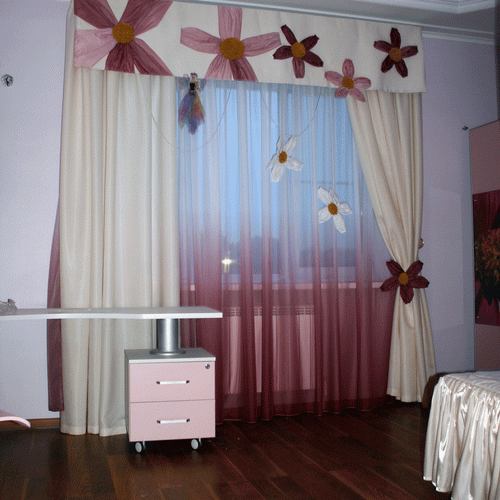
Color is of considerable importance, especially for a permanent resident of the nursery: there are shades that have a stimulating effect, there are those that reduce activity.
- Red is not recommended as the only color for curtains, as it has the strongest stimulating effect. But red stripes or figures are perfectly acceptable.
- Blue is too dark, worse than that - it extinguishes the light. It is recommended to choose softer shades in the children's room: blue, turquoise, azure, even when a design in a nautical style is being implemented.
- Green is an excellent color that is soothing but not relaxing and helps to focus attention. An excellent solution for choleric and sanguine people.
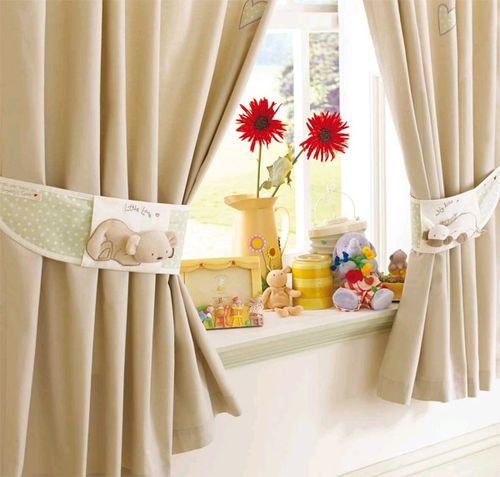
- Yellow is a cheerful stimulating color, especially recommended for phlegmatic children. If the psyche is too excitable, it is worth combining it with green or blue.
- Orange is energizing and vibrant, but nevertheless, it is advisable to combine it with other colors.
Gray, white, all dark tones in the children's room are unacceptable - they suppress both intellectual and physical activity.
The material must meet two requirements: consist mainly of natural fibers: cotton, linen, blended, and be easy to wash.
How to sew curtains
The best option for a nursery is one that can be modified as needed. A child is an actively developing little person, he has no established tastes, no hobbies, no color preferences. The design of the room assumes the possibility of a quick and relatively cheap change, which does not require major wall finishing or new furniture upholstery. Curtains can just play the role of a rapidly changing element of the interior.
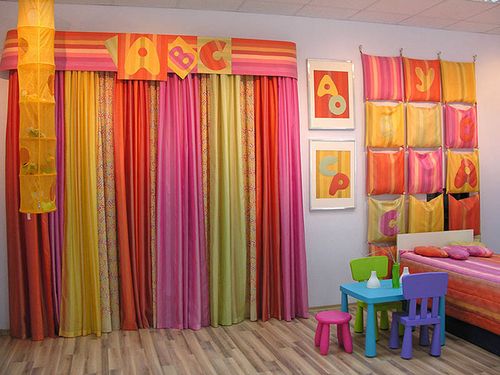
- The window is measured: the height of the curtain is the distance from the eaves to the floor or window sill, the width is at least equal to the window opening and the width of the part of the wall that it is desirable to cover.
- The amount of matter is calculated - if a simple straight canvas is assumed, then the size of the curtain coincides with the obtained data, plus the tolerance for hem. If curtains are made on eyelets, then the width of the fabric is doubled to form vertical folds.
- It is recommended to wet and iron the fabric to prevent shrinkage.
- The fabric is cut out - the tolerance for hem at the bottom is 10–15 cm. Along the upper edge - 3–6 cm. 1–1.5 cm is left for hem at the sides. Cutting is done from the wrong side. If the material is with a pattern, then you need to make sure that when you combine two canvases, the pattern coincides.
- Hem in progress. A tape for hooks is sewn to the top edge, or holes are made for eyelets.
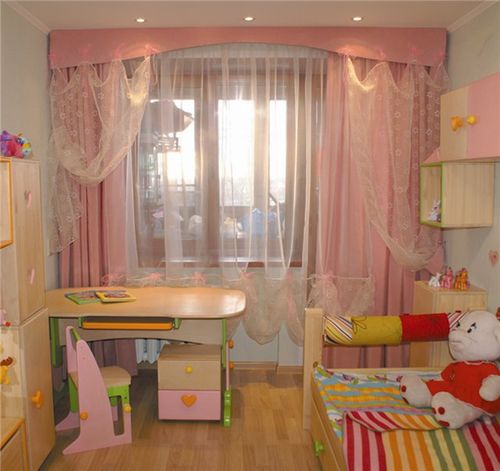
The video shows in detail the process of sewing curtains in the nursery with your own hands.
How to change the curtains in the nursery - original ideas
All options are available and do not require any financial costs, time, or patterns: just a little work and patience.
- A wide decorative braid is sewn to the upper edge of the product: with a floral ornament for a girl, for example, and with a nautical style for a boy.
- Bows are attached to hooks or rings or just to the top edge - colored or solid. For boys, the same option is implemented using a decorative cord. In the photo - a curtain with bows.
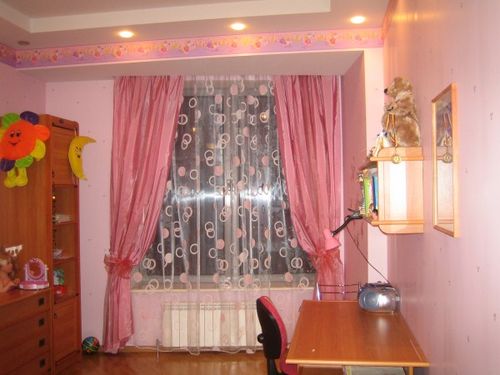
- A fun idea for a boy's nursery is to use loops like suspenders instead of rings to secure the curtain. In the photo - a variant with fasteners on a striped curtain.
- You can embroider a plain curtain with buttons or stick them on - in the latter case, it will be difficult to remove from the fabric. Small users can be involved in the process.
- A narrow bright braid is sewn onto a curtain or curtain from above and below, from the sides or even crosswise. In the photo - a curtain with sewn braid.
- A shorter curtain in a contrasting or matching color with a brighter pattern is sewn to the upper edge of the curtain.
Curtain "starry sky"
Simple and original idea. The material will need to be dense enough, opaque. The pattern is made according to the width of the window, since the required effect occurs only if the canvas is sufficiently stretched.
- The specified dimensions are applied to the material. The curtain is cut out with the expectation of a double hem from the bottom - 5–7 cm, since the fabric is dense, and from the top - 2–3 cm.
- An eyelet tape is glued to the upper edge. Holes for rings are made in the resulting strip, the eyelets are fixed.

